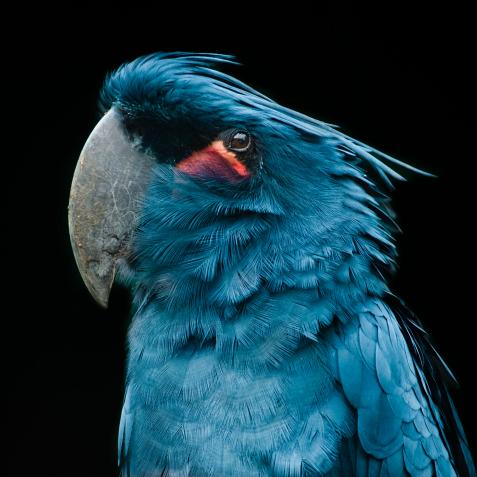
Issarapong Suya / EyeEm
Artificial Limbs: Pioneering Animal Surgery May Hold the Key to Human Advances
An Irish vetrinary surgeon has called for closer cooperation between animal and human medics to develop more effective prosthetic technologies to benefit amputees.
Artificial limbs have become sophisticated pieces of medical technology. Muscle-sensing systems, smart skin that gives amputees back their sense of touch or pain, and motorized fingers that move when the wearer thinks about it, are incredible breakthroughs.
Revolutionary, Yet Potentially Difficult

FluxFactory
Yet, prosthetics are not for everyone. There is no getting away from the low-tech physical strain of wearing them. Skin complaints, blisters and infections can develop where they are worn. Muscular strains, back pain and posture problems result from a less than ideal fit or from bodily imbalance.
In the US alone there are nearly 200,000 amputations each year, yet the cost of buying an artificial leg almost makes it a luxury purchase. They range from $5,000 for simpler mechanical and pneumatic models to more than $100,000 for a high-end bionic leg.
Animals Helping People

Kirill Kukhmar
That is why an Irish vet surgeon has called for closer cooperation between animal and human medics to develop more effective prosthetic technologies. Noel Fitzpatrick is no ordinary veterinary surgeon. His practice in England where he performs cutting edge orthopedic surgery.
Fitzpatrick was the first surgeon in the world to fit twin prosthetics to a cat. Oscar, a black cat from Jersey, lost both of his back feet to combine harvester blades. He was fitted with two intraosseous transcutaneous amputation prosthesis (ITAP) developed by Professor Gordon Blunn and Dr Catherine Pendegrass at University College London.
ITAP was custom-made to fit into holes drilled directly into the leg bones. An exoprosthetic rod protruded out through the skin with a special honeycomb structure based on deer antler that allowed the skin to bond with the implant and prevent infection. Specially designed feet could then be attached and replaced when needed.
At the time, the procedure was revolutionary. Fitzpatrick gained worldwide recognition for his willingness to innovate in animal medicine. Design and manufacture updates led him to develop the PerFITS (percutaneous fixation to skeleton) amputation prosthesis with improved bone fusion and anti-bacterial properties.
Speaking in 2016, Fitzpatrick said, “We have the ability to make custom implants. We can print in three dimensions a mechanical and biological scaffold right now which you can’t use in a human.”
He decried the lack of attention given to animal prosthetic innovations. Cats and dogs are the perfect test bed for artificial limb technologies because they will test artificial limbs to their limits. In the process, the vet profession has learned a lot about what works from implants that fuse to the wearer's bone.
“This is dumb, there is not one person running in the Paralympics this year running on an osteo-integrated prosthesis and I guarantee you that will not be the case in 20-years-time,” he remarked.
ITAP was supposed to save on some of the costs associated with traditional prosthetics, such as replacing the sockets that fit over the residual limb, repeated fittings and treating infections and pressure sores. In the end ITAP was not developed to any extent in human medicine.
Fitzpatrick set up The Humanimal Trust to encourage collaboration and inter-species research between the veterinary and medical professions. Then in 2018, he signed a deal with the Royal National Orthopedic Hospital in London for his system to be used to create bionic limbs for humans.
Veterinary Innovations

Kirill Kukhmar
Veterinary medicine continues to innovate the exo-endo implant with a recent quadruple limb operation performed on a cat with severe frostbite in Siberia. Vet surgeon Sergei Gorshkov collaborated with researchers at the Tomsk Polytechnic University to create a set of prosthetics for the cat, Dymka.
Specially coated implants were fused into her leg bones and flexible feet attached to the ends. Each prosthetic limb was custom-made of 3D printed titanium and then covered in an antibacterial coating of microactive calcium phosphate
3D printed manufacture is the future of prosthetic development. It allows rapid prototyping and design in a variety of durable and lightweight materials including carbon composites and biocompatible materials for better sockets.
Designs can be printed anywhere there is a compatible printer. 3D body scanning and measurement technology allows medics to create a more satisfying experience for the wearer. Future technologies such as bionic propulsion and computer algorithms will help to create more natural movement.
Biomechanics and industrial design can help multiple species at the same time. Concepts like biomimicry are important here–taking the best 'designs' of evolution in the animal world and adapting them for human use–like a prosthetic leg for climbers modeled on a mountain goat's leg. Or actually creating a prosthetic for an injured dolphin or kangaroo.
Animal models have been the one technology that has advanced modern medicine more than any other and there is still huge scope to learn from animals in prosthetic design. Promoting 'one medicine' programs where veterinary and human researchers learn together can improve health technologies for all species.


















